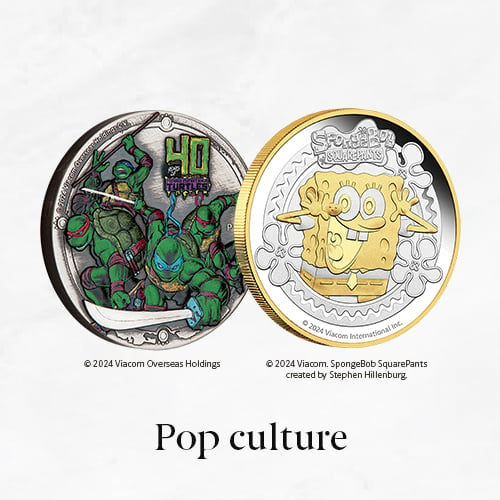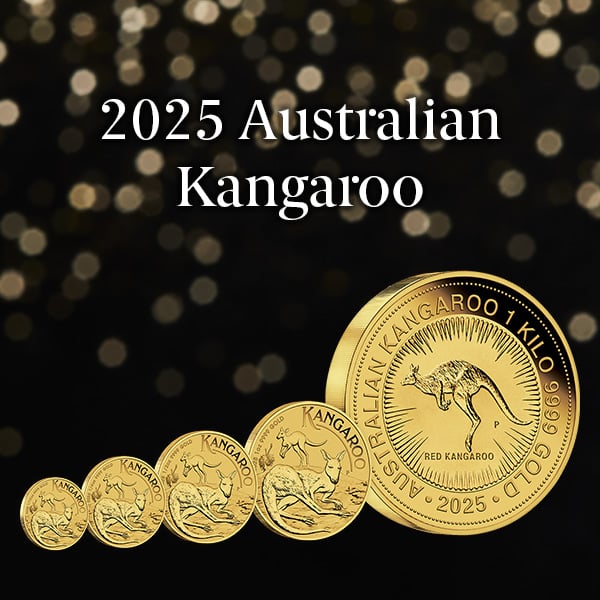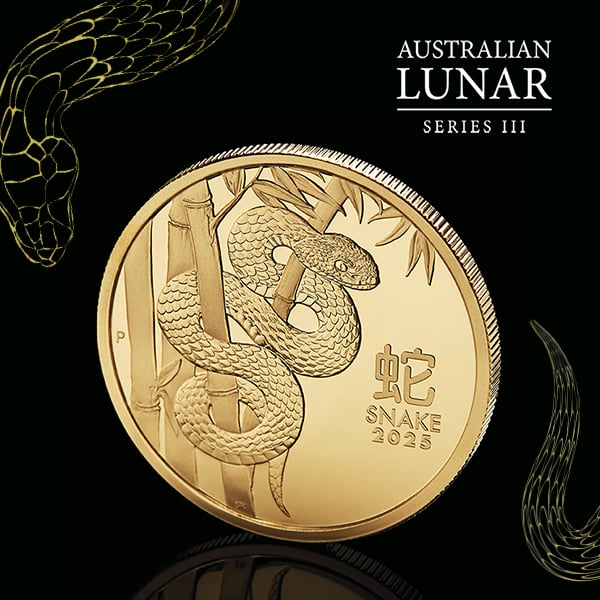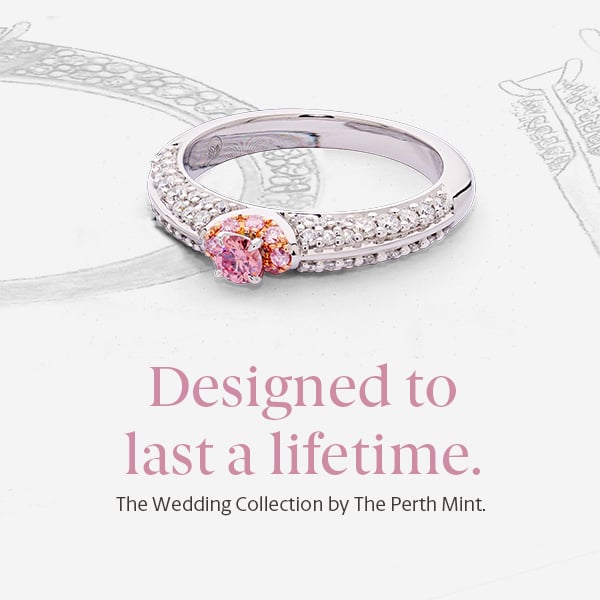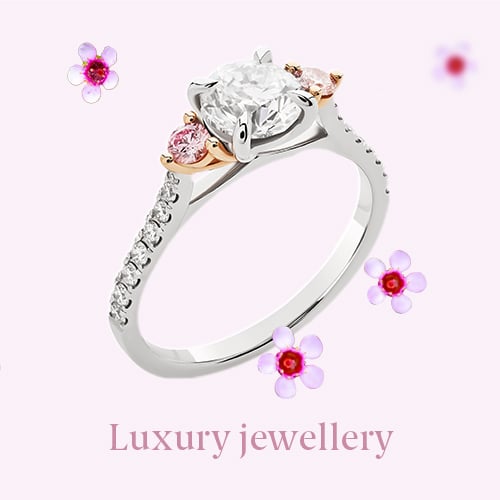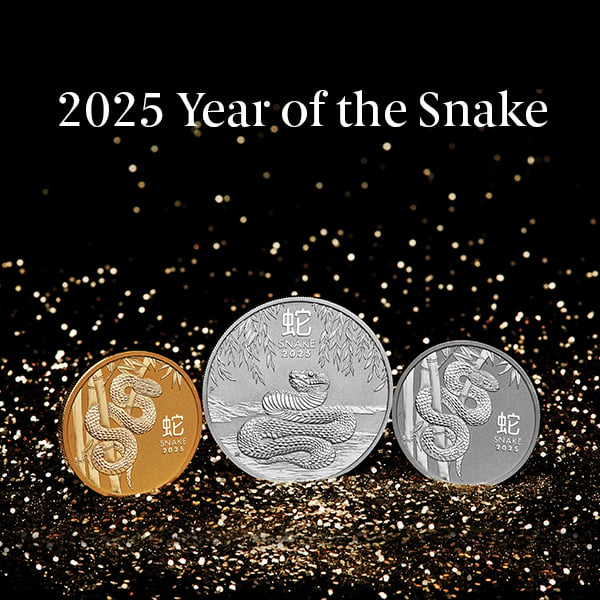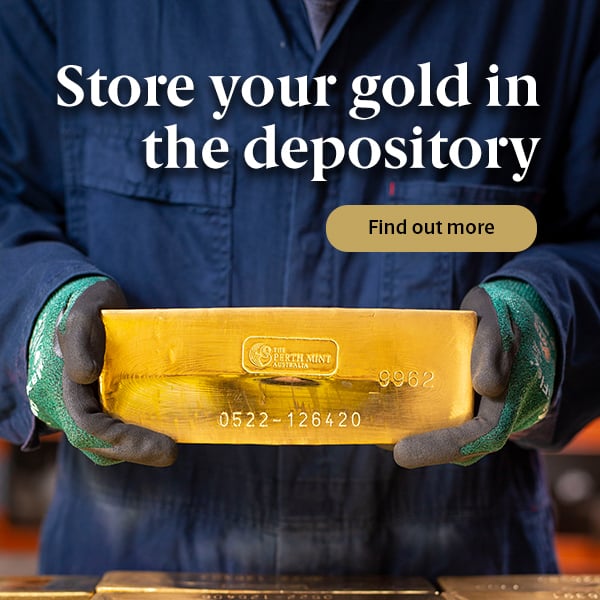How to avoid buying fake coins and bars
The Perth Mint has seen an increase in fake bars and coins falsely bearing The Perth Mint’s branding and packaging being sold in the marketplace.
These scams are becoming more sophisticated, and for this reason we are working closely with law enforcement agencies and assisting police where required to combat the sale of these fake products.
Without proper precautions, even experienced investors and collectors can fall victim to scams. The problem extends across the full spectrum of bullion and numismatic products, comprising cast (poured) bars, minted bars, as well as gold and silver coins.
Fake bars and coins are often constructed using inexpensive metals like tungsten or lead, which are coated in a thin layer of gold or silver to mimic the appearance of genuine precious metals products.
To combat this problem, we’re sharing this important guide, so you know what to look out for and avoid being caught up in a scam.
Six tips for avoiding fake bars and coins
1. Buy from reputable sellers
The best way to eliminate the risk of buying fake bars and coins is to only purchase our products directly from The Perth Mint website or from one of our approved bullion distributors and collector coin distributors.
We recommend avoiding private or unverified online listings, as scammers frequently exploit these platforms to sell fake bars and coins.
Despite eBay’s rules and policies forbidding the listing of replicas, counterfeit items or unauthorised copies, there are many products from large manufacturers and well-known brands that are imitated and offered for sale.
2. Avoid deals that are too good to be true
If a deal seems too good to be true, it most likely is. Scammers often entice buyers with unrealistically low prices for gold and silver. It’s important to understand the current market value of gold and silver, which you can track easily on our website, to gauge whether the price offered aligns with reality.
It’s also important to note that a listing marked ‘No Returns’ is an obvious red flag.
3. Check specifications
Before purchasing precious metal products, you should check that the products full specifications are included. Official refiners and manufacturers like The Perth Mint advertise precise weights and dimensions on coins and bars. When gold or silver is replaced with base metal, scammers are highly unlikely to be able to match these specifications precisely.
4. Understand key security features
The Perth Mint integrates advanced security features into our products to ensure authenticity. We recommend you familiarise yourself with the following methods of verifying genuine products before making any purchases:
Mintmark verification
Authentic collector and bullion coins include mintmarks—official engravings added by the mint that created the product. All our coins include a traditional ‘P’ mintmark in the design.
Authentication feature
All our bullion coins incorporate an authentication feature in the form of a micro-laser engraved letter which is only detectable under a magnifying glass.
Tamper evident packaging
Our minted bars are housed in tamper-evident packaging which will display the word VOID around the edge of the blister if the card has been prized open.
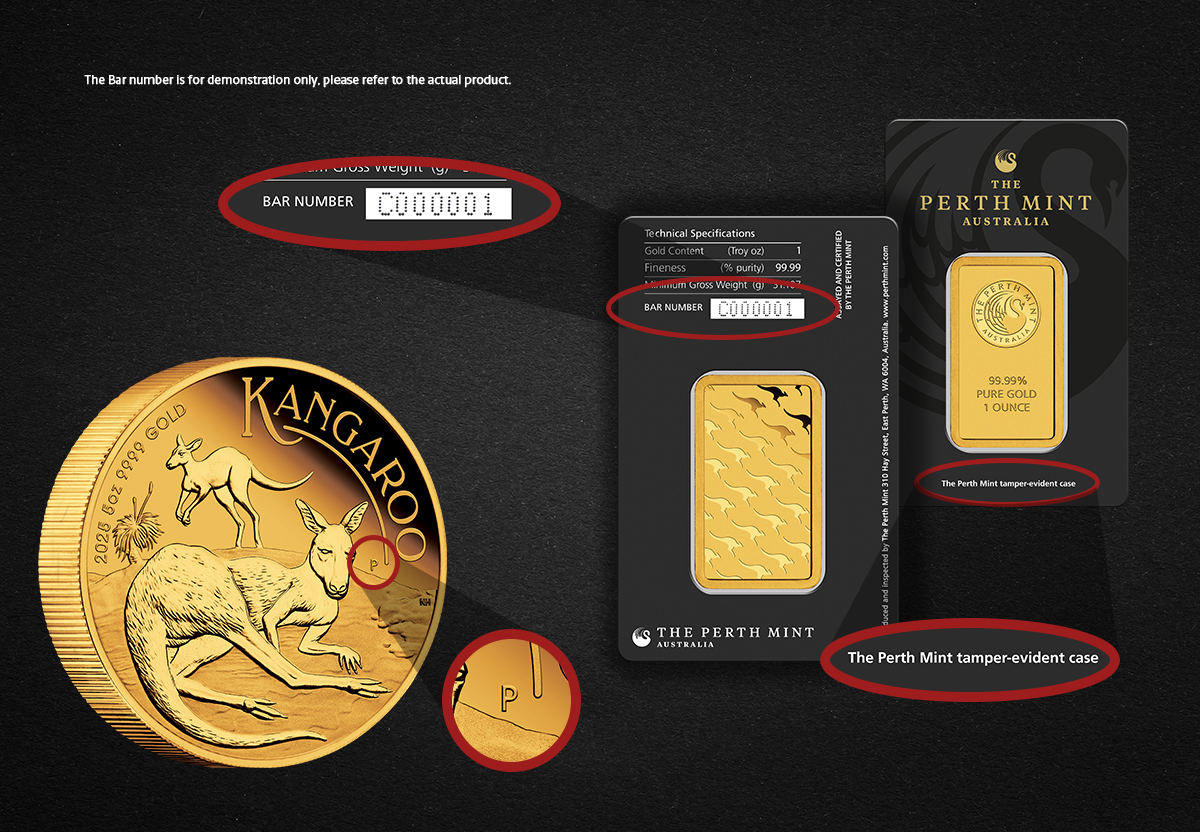
5. Request a Certificate of Authenticity
All Perth Mint collector coins include a numbered ‘Certificate of Authenticity’, issued as legal tender under the Australian Currency Act 1965 or under the authority of the Government of Tuvalu.
A ‘Certificate of Authenticity’ is presented inside our coin packaging and includes the products technical specifications including the coins weight, purity, fineness, monetary denomination, maximum diameter (mm), maximum thickness(mm) and the maximum mintage. All legal tender coins also bear the effigy of HM King Charles III or HM Queen Elizabeth II.
If the seller doesn't provide certification—or offers excuses as to why it isn’t available—consider it a red flag.
It’s important to note our bullion coins do not include a Certificate of Authenticity.
6. Inspect the physical characteristics
Fake coins and bars often exhibit flaws that you can identify through close inspection. Key indicators include:
Discrepancies in weight
A genuine gold or silver product will match the stated weight exactly. Fake items are often marginally lighter or heavier. Use a precision scale to confirm.
Imperfections in design details
Authentic coins and bars are struck with perfect precision. Look for blurry edges, poor definitions, or distorted logos as signs of counterfeit production.
Appearance
Fake gold bars often have a colour that appears slightly off. Spotting this may require some experience, but trusted retailers will never offer items that don’t meet the standard.
Report scams and fakes
We urge anyone who suspects they have been sold fake gold and silver bars and coins to report it to their local police station and consumer protection authorities.
We take counterfeiting seriously and are committed to protecting our customers and you can report suspicious sellers and scams to us on the details below.
Report Counterfeits

